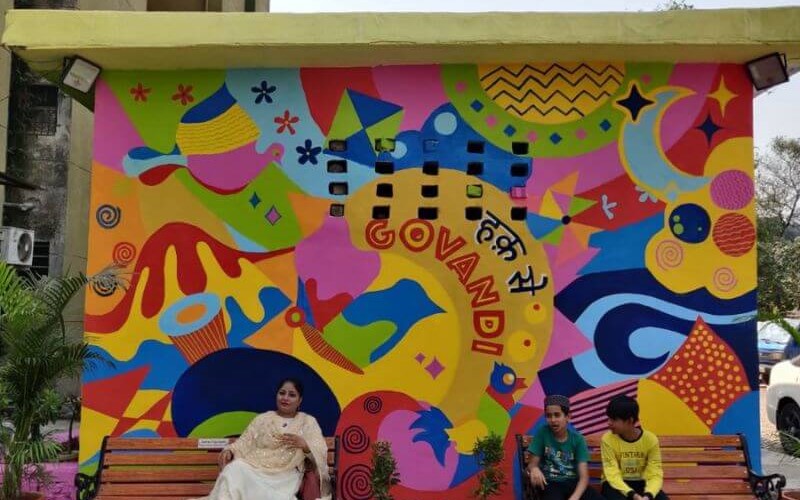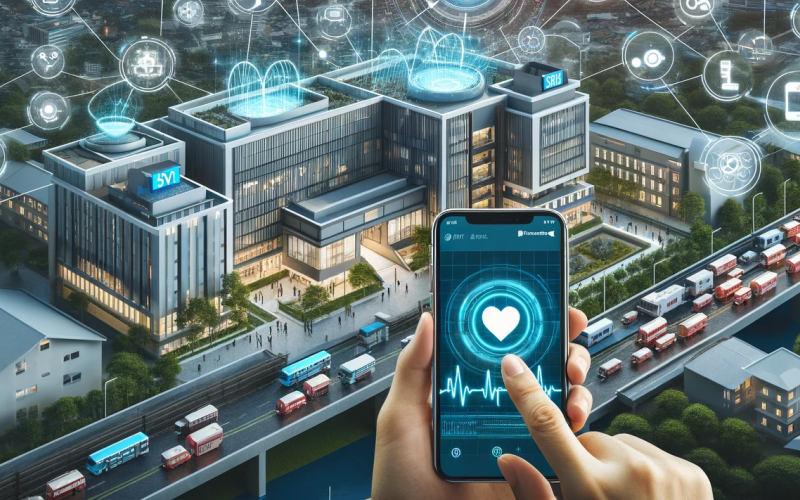Future Cities Expo Forum Award
Awards Categories and Selection Criteria
The Future Cities Forum Summer Awards 2024 recognize and celebrate innovative projects that contribute to the development of sustainable and resilient urban environments. Here are five potential categories with their selection criteria:
1. Smart Infrastructure & Mobility Solutions:
Focus: Projects that leverage technology to improve urban infrastructure like transportation networks, energy grids, or waste management systems.
Selection Criteria:
Innovation: Originality and effectiveness of the applied technology.
Impact: Measurable improvement in efficiency, sustainability, or user experience.
Scalability: Potential for the solution to be replicated in different urban contexts.
Environmental Impact: Reduction in resource consumption, pollution, or greenhouse gas emissions.
2. Inclusive and Equitable Urban Design:
Focus: Projects that create accessible, diverse, and socially inclusive public spaces and communities.
Selection Criteria:
Community Engagement: Level of involvement and participation of residents in the design process.
Equity and Accessibility: Provision of equal access and services for all residents regardless of ability or background.
Social Sustainability: Promotion of social cohesion, interaction, and well-being within communities.
Resilience to Disasters and Climate Change: Integration of design elements to handle natural disasters and environmental challenges.
3. Sustainable Living and Resource Management:
Focus: Projects that promote sustainable practices in urban living, including water management, energy efficiency, or waste reduction.
Selection Criteria:
Innovation: Uniqueness and effectiveness of the approach to resource management.
Environmental Impact: Reduction of environmental footprint and resource consumption.
Economic Viability: Cost-effectiveness and potential for long-term financial sustainability.
Community Outreach and Education: Promotion of sustainability awareness and behavior change among residents.
4. Digital Transformation and Citizen Services:
Focus: Projects that utilize technology to improve citizen engagement, access to services, or government efficiency.
Selection Criteria:
Focus on Users: Alignment of the project with citizen needs and priorities.
Accessibility and Inclusivity: Ease of use for diverse user groups.
Data Privacy and Security: Robust safeguards for citizen data privacy and security.
Innovation and Scalability: Originality of the approach and potential for broader application.
5. Emerging Technologies for Smart Cities:
Focus: Projects that explore and implement cutting-edge technologies (e.g., AI, IoT, blockchain) in urban development.
Selection Criteria:
Technological Advancement: Uniqueness and potential of the implemented technology.
Application in Urban Context: Relevance of the technology to solving urban challenges.
Pilot Project Potential: Value of the project as a model for future large-scale implementation.
Integration and Collaboration: Seamless integration with existing technologies and collaboration with stakeholders.
6. Urban Regeneration and Adaptive Reuse:
Focus: Projects that revitalize neglected urban areas or give new life to existing structures, promoting sustainable development.
Selection Criteria:
Community Integration: Successful integration of the project with the surrounding neighborhood.
Historic Preservation: Respect for the historical and cultural significance of existing structures.
Environmental Sustainability: Use of sustainable materials and practices in renovation or redevelopment.
Economic Development: Positive impact on local businesses and job creation.
7. Urban Agriculture and Food Systems:
Focus: Projects that promote local food production, urban farming, and building resilient food systems within cities.
Selection Criteria:
Innovation and Scalability: Novel approaches to urban agriculture with potential for wider adoption.
Social Impact: Increased access to fresh, healthy food for all residents, particularly low-income communities.
Environmental Benefits: Reduced reliance on long-distance food transportation and associated environmental impact.
Community Engagement: Involvement of residents in food production and education initiatives.
8. Public Health and Urban Wellbeing:
Focus: Projects that create healthier and more livable urban environments, promoting physical and mental wellbeing.
Selection Criteria:
Public Health Impact: Measurable improvement in air quality, noise pollution, or access to healthcare services.
Active Living and Well-being: Promotion of physical activity, healthy lifestyles, and mental health resources.
Social Cohesion and Safety: Creating safe, inclusive public spaces that foster community interaction.
Urban Design for Accessibility: Features that cater to the needs of people with disabilities and diverse abilities.
9. Climate Resilience and Adaptation:
Focus: Projects that address climate change challenges and prepare cities for extreme weather events, rising sea levels, or other environmental threats.
Selection Criteria:
Climate Risk Reduction: Effectiveness of the project in mitigating or adapting to specific climate threats.
Sustainability and Resource Use: Minimization of environmental impact while addressing climate challenges.
Community Preparedness and Education: Building awareness and capacity within communities to respond to climate-related emergencies.
Long-Term Sustainability: Durability and adaptability of solutions to face future climate change scenarios.
10. Creative Urban Placemaking and Public Art:
Focus: Projects that utilize art, culture, and innovative design to create vibrant and engaging public spaces within cities.
Selection Criteria:
Community Engagement and Participation: Level of involvement of residents in the design and creation of the public space.
Artistic Merit and Originality: Uniqueness and artistic quality of the public art and design elements.
Sense of Place and Identity: Contribution of the project to the overall character and identity of the neighborhood.
Social Interaction and Well-being: Encouragement of community engagement and positive social interaction within the public space.
11. AI Information Security in Smart Cities:
Focus: Projects that leverage AI to enhance data security, privacy, and cyber resilience in smart city infrastructure and applications.
Selection Criteria:
Innovation: Uniqueness and effectiveness of the AI-based security solution.
Security and Privacy Protection: Strength of the solution in safeguarding citizen data and mitigating cyber threats.
Scalability and Integration: Ability to integrate the solution with existing smart city systems and scale for wider application.
Ethical Considerations: Alignment of the AI solution with ethical principles of data privacy and responsible AI development.
12. Blockchain for Smart City Applications:
Focus: Projects that utilize blockchain technology to improve transparency, trust, and efficiency in various aspects of smart city management.
Selection Criteria:
Innovation and Use Case: Novelty of the blockchain application within the smart city context.
Transparency and Traceability: Ability of the blockchain solution to provide secure and transparent data management.
Decentralization and Efficiency: Enhancement of efficiency and decision-making through distributed ledger technology.
Interoperability and Integration: Compatibility and seamless integration with existing smart city infrastructure.
13. Smart Medical Systems for Urban Wellbeing:
Focus: Projects that integrate technology and data to improve healthcare delivery, access, and preventive care within cities.
Selection Criteria:
Public Health Impact: Measurable improvement in healthcare outcomes, disease prevention, or early detection.
Access and Equity: Accessibility of the smart medical system for diverse populations within the city.
Data Privacy and Security: Robust safeguards for patient data privacy and secure data exchange.
Sustainability and Scalability: Cost-effectiveness of the system and potential for replication in other urban settings.
1. Smart Infrastructure & Mobility Solutions:
Focus: Projects that leverage technology to improve urban infrastructure like transportation networks, energy grids, or waste management systems.
Selection Criteria:
Innovation: Originality and effectiveness of the applied technology.
Impact: Measurable improvement in efficiency, sustainability, or user experience.
Scalability: Potential for the solution to be replicated in different urban contexts.
Environmental Impact: Reduction in resource consumption, pollution, or greenhouse gas emissions.


2. Inclusive and Equitable Urban Design:
Focus: Projects that create accessible, diverse, and socially inclusive public spaces and communities.
Selection Criteria:
Community Engagement: Level of involvement and participation of residents in the design process.
Equity and Accessibility: Provision of equal access and services for all residents regardless of ability or background.
Social Sustainability: Promotion of social cohesion, interaction, and well-being within communities.
Resilience to Disasters and Climate Change: Integration of design elements to handle natural disasters and environmental challenges.
2. Inclusive and Equitable Urban Design:
Focus: Projects that create accessible, diverse, and socially inclusive public spaces and communities.
Selection Criteria:
Community Engagement: Level of involvement and participation of residents in the design process.
Equity and Accessibility: Provision of equal access and services for all residents regardless of ability or background.
Social Sustainability: Promotion of social cohesion, interaction, and well-being within communities.
Resilience to Disasters and Climate Change: Integration of design elements to handle natural disasters and environmental challenges.

3. Sustainable Living and Resource Management:
Focus: Projects that promote sustainable practices in urban living, including water management, energy efficiency, or waste reduction.
Selection Criteria:
Innovation: Uniqueness and effectiveness of the approach to resource management.
Environmental Impact: Reduction of environmental footprint and resource consumption.
Economic Viability: Cost-effectiveness and potential for long-term financial sustainability.
Community Outreach and Education: Promotion of sustainability awareness and behavior change among residents.


4. Digital Transformation and Citizen Services:
Focus: Projects that utilize technology to improve citizen engagement, access to services, or government efficiency.
Selection Criteria:
Focus on Users: Alignment of the project with citizen needs and priorities.
Accessibility and Inclusivity: Ease of use for diverse user groups.
Data Privacy and Security: Robust safeguards for citizen data privacy and security.
Innovation and Scalability: Originality of the approach and potential for broader application.
4. Digital Transformation and Citizen Services:
Focus: Projects that utilize technology to improve citizen engagement, access to services, or government efficiency.
Selection Criteria:
Focus on Users: Alignment of the project with citizen needs and priorities.
Accessibility and Inclusivity: Ease of use for diverse user groups.
Data Privacy and Security: Robust safeguards for citizen data privacy and security.
Innovation and Scalability: Originality of the approach and potential for broader application.

5. Emerging Technologies for Smart Cities:
Focus: Projects that explore and implement cutting-edge technologies (e.g., AI, IoT, blockchain) in urban development.
Selection Criteria:
Technological Advancement: Uniqueness and potential of the implemented technology.
Application in Urban Context: Relevance of the technology to solving urban challenges.
Pilot Project Potential: Value of the project as a model for future large-scale implementation.
Integration and Collaboration: Seamless integration with existing technologies and collaboration with stakeholders.


6. Urban Regeneration and Adaptive Reuse:
Focus: Projects that revitalize neglected urban areas or give new life to existing structures, promoting sustainable development.
Selection Criteria:
Community Integration: Successful integration of the project with the surrounding neighborhood.
Historic Preservation: Respect for the historical and cultural significance of existing structures.
Environmental Sustainability: Use of sustainable materials and practices in renovation or redevelopment.
Economic Development: Positive impact on local businesses and job creation.
6. Urban Regeneration and Adaptive Reuse:
Focus: Projects that revitalize neglected urban areas or give new life to existing structures, promoting sustainable development.
Selection Criteria:
Community Integration: Successful integration of the project with the surrounding neighborhood.
Historic Preservation: Respect for the historical and cultural significance of existing structures.
Environmental Sustainability: Use of sustainable materials and practices in renovation or redevelopment.
Economic Development: Positive impact on local businesses and job creation.

7. Urban Agriculture and Food Systems:
Focus: Projects that promote local food production, urban farming, and building resilient food systems within cities.
Selection Criteria:
Innovation and Scalability: Novel approaches to urban agriculture with potential for wider adoption.
Social Impact: Increased access to fresh, healthy food for all residents, particularly low-income communities.
Environmental Benefits: Reduced reliance on long-distance food transportation and associated environmental impact.
Community Engagement: Involvement of residents in food production and education initiatives.


8. Public Health and Urban Wellbeing:
Focus: Projects that create healthier and more livable urban environments, promoting physical and mental wellbeing.
Selection Criteria:
Public Health Impact: Measurable improvement in air quality, noise pollution, or access to healthcare services.
Active Living and Well-being: Promotion of physical activity, healthy lifestyles, and mental health resources.
Social Cohesion and Safety: Creating safe, inclusive public spaces that foster community interaction.
Urban Design for Accessibility: Features that cater to the needs of people with disabilities and diverse abilities.
8. Public Health and Urban Wellbeing:
Focus: Projects that create healthier and more livable urban environments, promoting physical and mental wellbeing.
Selection Criteria:
Public Health Impact: Measurable improvement in air quality, noise pollution, or access to healthcare services.
Active Living and Well-being: Promotion of physical activity, healthy lifestyles, and mental health resources.
Social Cohesion and Safety: Creating safe, inclusive public spaces that foster community interaction.
Urban Design for Accessibility: Features that cater to the needs of people with disabilities and diverse abilities.

9. Climate Resilience and Adaptation:
Focus: Projects that address climate change challenges and prepare cities for extreme weather events, rising sea levels, or other environmental threats.
Selection Criteria:
Climate Risk Reduction: Effectiveness of the project in mitigating or adapting to specific climate threats.
Sustainability and Resource Use: Minimization of environmental impact while addressing climate challenges.
Community Preparedness and Education: Building awareness and capacity within communities to respond to climate-related emergencies.
Long-Term Sustainability: Durability and adaptability of solutions to face future climate change scenarios.


10. Creative Urban Placemaking and Public Art:
Focus: Projects that utilize art, culture, and innovative design to create vibrant and engaging public spaces within cities.
Selection Criteria:
Community Engagement and Participation: Level of involvement of residents in the design and creation of the public space.
Artistic Merit and Originality: Uniqueness and artistic quality of the public art and design elements.
Sense of Place and Identity: Contribution of the project to the overall character and identity of the neighborhood.
Social Interaction and Well-being: Encouragement of community engagement and positive social interaction within the public space.
10. Creative Urban Placemaking and Public Art:
Focus: Projects that utilize art, culture, and innovative design to create vibrant and engaging public spaces within cities.
Selection Criteria:
Community Engagement and Participation: Level of involvement of residents in the design and creation of the public space.
Artistic Merit and Originality: Uniqueness and artistic quality of the public art and design elements.
Sense of Place and Identity: Contribution of the project to the overall character and identity of the neighborhood.
Social Interaction and Well-being: Encouragement of community engagement and positive social interaction within the public space.

11. AI Information Security in Smart Cities:
Focus: Projects that leverage AI to enhance data security, privacy, and cyber resilience in smart city infrastructure and applications.
Selection Criteria:
Innovation: Uniqueness and effectiveness of the AI-based security solution.
Security and Privacy Protection: Strength of the solution in safeguarding citizen data and mitigating cyber threats.
Scalability and Integration: Ability to integrate the solution with existing smart city systems and scale for wider application.
Ethical Considerations: Alignment of the AI solution with ethical principles of data privacy and responsible AI development.


12. Blockchain for Smart City Applications:
Focus: Projects that utilize blockchain technology to improve transparency, trust, and efficiency in various aspects of smart city management.
Selection Criteria:
Innovation and Use Case: Novelty of the blockchain application within the smart city context.
Transparency and Traceability: Ability of the blockchain solution to provide secure and transparent data management.
Decentralization and Efficiency: Enhancement of efficiency and decision-making through distributed ledger technology.
Interoperability and Integration: Compatibility and seamless integration with existing smart city infrastructure.
12. Blockchain for Smart City Applications:
Focus: Projects that utilize blockchain technology to improve transparency, trust, and efficiency in various aspects of smart city management.
Selection Criteria:
Innovation and Use Case: Novelty of the blockchain application within the smart city context.
Transparency and Traceability: Ability of the blockchain solution to provide secure and transparent data management.
Decentralization and Efficiency: Enhancement of efficiency and decision-making through distributed ledger technology.
Interoperability and Integration: Compatibility and seamless integration with existing smart city infrastructure.

13. Smart Medical Systems for Urban Wellbeing:
Focus: Projects that integrate technology and data to improve healthcare delivery, access, and preventive care within cities.
Selection Criteria:
Public Health Impact: Measurable improvement in healthcare outcomes, disease prevention, or early detection.
Access and Equity: Accessibility of the smart medical system for diverse populations within the city.
Data Privacy and Security: Robust safeguards for patient data privacy and secure data exchange.
Sustainability and Scalability: Cost-effectiveness of the system and potential for replication in other urban settings.
